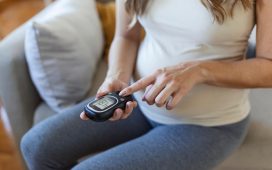Index emphasizes distinct symptoms in children and adolescents, and is linked to poorer overall health, QoL
By Elana Gotkine HealthDay Reporter
THURSDAY, Aug. 22, 2024 (HealthDay News) — Postacute sequelae of severe acute respiratory syndrome coronavirus 2 (SARS-CoV-2) infection (PASC) can be identified using an index of symptoms, which differs for school-aged children and adolescents, according to a study published online Aug. 21 in the Journal of the American Medical Association.
Rachel S. Gross, M.D., from the NYU Grossman School of Medicine in New York City, and colleagues conducted a multicenter, longitudinal observational cohort study involving participants recruited from more than 60 U.S. health care and community settings between March 2022 and December 2023. Data were included for 898 school-aged children (751 with previous SARS-CoV-2 infection [infected] and 147 without [uninfected]) and 4,469 adolescents (3,109 infected and 1,360 uninfected).
The researchers found that in both school-aged children and adolescents, 14 symptoms were more common in those with versus without infection history, with four additional symptoms in school-aged children only and three in adolescents only in adjusted models. Almost every organ system was affected by these symptoms. For each age group, a PASC research index was developed based on combinations of symptoms most associated with infection history; these indices correlated with poorer overall health and quality of life. In school-aged children, the index emphasized neurocognitive, pain, and gastrointestinal symptoms, while in adolescents, change or loss in smell or taste, pain, and fatigue/malaise-related symptoms were emphasized. In school-aged children and adolescents, clustering analyses identified four and three PASC symptom phenotypes, respectively.
“Symptoms that characterized pediatric PASC differed by age group, and several distinct phenotypic PASC presentations were described,” the authors write.
Several authors disclosed ties to the pharmaceutical industry.
Editorial (subscription or payment may be required)
Copyright © 2024 HealthDay. All rights reserved.








